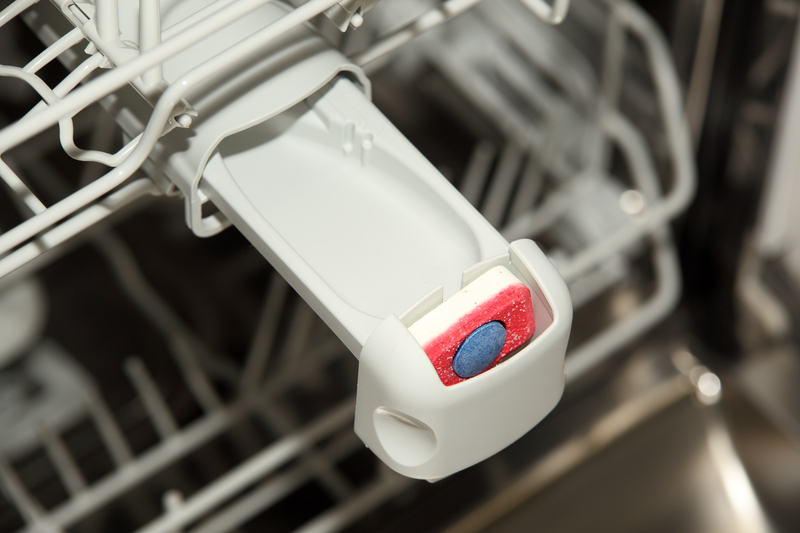Indoors, In-Hale: Harnessing Clean Air for Better Health
Posted on 21/06/2025
Indoors, In-Hale: Harnessing Clean Air for Better Health
Do you ever stop to think about the air you breathe inside your home or workplace? *While it may not be visible, indoor air quality can profoundly affect your health and overall well-being.* With most people spending up to 90% of their time indoors, focusing on clean indoor air isn't just a trend -- it's a vital part of a healthy lifestyle. In this comprehensive guide, we'll explore how you can harness the power of clean air for better health indoors, explaining sources of pollutants, practical solutions, modern technology, and lifestyle adjustments that ensure every breath you take benefits your body and mind.

Understanding Indoor Air Quality: Why It Matters
The search for healthy indoor air has never been more relevant. Indoor air can contain a mixture of pollutants, allergens, and contaminants -- some invisible, some with clear effects on your daily life. Studies show poor indoor air quality (IAQ) has been linked to a host of health issues, including:
- Respiratory conditions like asthma, allergies, and bronchitis
- Headaches, fatigue, and cognitive impairment
- Increased risk of cardiovascular disease
- Worsening of pre-existing health concerns
To truly harness the benefits of clean indoor air for better health, it's essential to understand what causes poor IAQ and how you can actively combat it.
The Surprising Sources of Indoor Air Pollution
Indoor air pollution doesn't just come from outside. In fact, your home or workplace itself may be a source of unwanted toxins. Here are some typical culprits:
- Household cleaning products: Many sprays, disinfectants, and air fresheners release *volatile organic compounds* (VOCs) that linger in the air.
- Mold and dampness: High humidity, leaks, or wet surfaces can breed mold spores -- a common cause of indoor air quality issues.
- Building materials and furnishings: Carpets, paints, pressed wood, and other household items can emit formaldehyde and other chemicals.
- Cooking and heating: Gas stoves, fireplaces, and certain heating sources generate carbon monoxide, nitrogen dioxide, and fine particulate matter.
- Poor ventilation: Stale indoor air allows pollutants to concentrate, especially in tightly constructed, energy-efficient buildings.
- Dust mites and pet dander: Common allergens thrive in unventilated, dirty environments.
Identifying these sources is the first step in creating a healthier indoor environment. Now, let's explore actionable strategies to achieve clean air at home and at work.
Practical Strategies for Harnessing Clean Air Indoors
1. Embrace Proper Ventilation
Bringing in fresh, outdoor air is essential for reducing indoor pollutant buildup. Try these techniques:
- Open windows and doors regularly (weather permitting) to promote cross-ventilation.
- Install trickle vents or exhaust fans in high-humidity areas like kitchens and bathrooms.
- Use range hoods, especially when cooking with gas, to disperse particulates and gases.
- Don't block vents or air returns -- ensure your HVAC system circulates air efficiently.
2. Invest in Air Purifiers and Modern Filtration
Modern air purifiers equipped with HEPA filters can dramatically reduce particulate matter, allergens, and even some volatile organic compounds from indoor air. Look for models with activated carbon filters, especially if odors or chemical sensitivities are a concern.
- Choose the right size unit for your room's square footage.
- Maintain and replace filters as recommended for optimal performance.
- Consider models with smart sensors that monitor air quality and adjust fan speeds automatically.
Tip: Some advanced systems integrate UV-C light, which can neutralize bacteria and viruses in the air.
3. Control Moisture and Prevent Mold
Humidity plays a significant role in indoor air health.
- Keep indoor humidity between 30% and 50% -- use a hygrometer for easy tracking.
- Run dehumidifiers in damp areas like basements.
- Fix all leaks promptly and ensure surfaces dry quickly after getting wet.
- Clean and ventilate bathrooms after showers or baths to prevent mold growth.
4. Clean Smart, Clean Safe
Regular and safe cleaning is a top defense against dust, allergens, and germs -- but some cleaning methods and products can worsen air quality. Opt for:
- Natural or fragrance-free cleaning products that minimize chemical emissions.
- Microfiber dusters and damp cloths to trap and remove dust without stirring particles into the air.
- Vacuum with a HEPA filter -- this traps fine dust, mites, and allergens.
Avoid aerosol sprays and don't rely on scented air fresheners to mask odors; address the source instead.
5. Go Green with Indoor Plants
Some studies suggest adding houseplants can slightly improve air quality and offer psychological well-being. While they don't replace ventilation or filtration, species like spider plants, snake plants, and peace lilies can add a fresh touch to your space. Just be mindful of allergies and keep plants' soil dry to avoid mold.
Technology and Innovations for Cleaner Air
Smart Air Quality Monitors
Today's technology brings awareness and convenience to your efforts for harnessing clean indoor air. Smart air quality monitors can:
- Track real-time levels of PM2.5, PM10, VOCs, CO2, and humidity
- Send alerts to your smartphone if air quality dips
- Integrate with smart home systems to trigger purifiers or ventilation automatically
By knowing what's in your air, you can target improvement strategies more effectively.
Whole-Home Air Filtration Systems
If you want ultimate confidence in indoor air cleanliness, consider upgrading your HVAC system with:
- High-efficiency HEPA or MERV 13+ filters
- UV-C light air sanitizers
- Dedicated energy recovery ventilators (ERVs) or heat recovery ventilators (HRVs) for balanced ventilation without energy loss
Consult an HVAC professional to find out what solutions fit your home and budget.
Lifestyle Changes: Easy Habits for Pure Indoor Air
Improve Indoor Air with Healthy Practices
Everyday habits can make the air you breathe at home or in the office significantly healthier. Embrace these tips:
- No smoking indoors -- even a single cigarette can pollute a room for hours.
- Remove shoes at the door to avoid tracking in pollen, mold, and chemicals.
- Feed pets a healthy diet, brush them regularly, and keep bedding clean to reduce dander.
- Avoid idling vehicles in attached garages.
- Limit burning candles, incense, or wood indoors.
Even small changes, done consistently, add up to a cleaner indoor air environment.
Redesign Your Space for Cleanliness and Airflow
- Declutter surfaces, which helps dusting and encourages airflow.
- Choose hard-surface flooring over carpets if possible.
- Arrange furniture so that air vents and pathways are unobstructed.
- Install operable windows or skylights where possible for natural ventilation.
Enhancing the air you breathe can also improve the aesthetics and function of your home or workspace.
The Connection Between Clean Indoor Air and Better Health Outcomes
Why does all this matter? Cleaner air indoors means healthier families, happier workplaces, and more productive days. Wide-ranging health benefits include:
- Reduced asthma and allergy attacks, particularly in children and the elderly
- Improved sleep quality due to lower irritant and allergen exposure
- Lower risk of respiratory and cardiovascular diseases
- Mental clarity and productivity fueled by oxygen-rich, fresh air
- Enhanced immune function through reduction of pollutants that can trigger inflammation
In times of seasonal illness or flu, high indoor air quality can help prevent the spread of airborne pathogens -- another reason to prioritize fresh, clean air all year round.

Creating a Personalized Clean Air Plan: Steps to Begin Today
- Assess your current indoor air quality using a smart monitor or trusted checklist.
- Identify potential sources of pollution in your living or working spaces.
- Ventilate: Start with simple steps like opening windows during cleaning or after cooking.
- Invest in filtration: Purchase an air purifier or upgrade HVAC filters as budget allows.
- Modify cleaning routines for safer, greener products and methods.
- Establish new habits, such as shoe removal, pet grooming, or periodic deep cleaning.
- Track your progress -- note improvements in symptoms, sleep, and overall well-being.
When to Seek Professional Help
If you notice persistent mold, strong chemical odors, or health symptoms that don't improve, it's wise to consult an indoor air quality specialist. Professionals can:
- Test for specific pollutants including radon, formaldehyde, or hidden mold
- Recommend customized solutions and technology for your building type
- Ensure your ventilation, filtration, and humidity systems meet current standards
Looking Forward: Clean Indoor Air as an Ongoing Wellness Investment
Prioritizing clean air indoors isn't a one-time project -- it's an investment in long-term health, productivity, and peace of mind for you and your loved ones. As new technologies and research emerge, there will be even more tools available to help you maintain a safe, refreshing environment at work and at home.
In conclusion, the air we inhale indoors can be a secret factor in our quest for better health. By understanding the sources of indoor air pollution, leveraging advanced purification methods, maintaining healthy habits, and staying informed about new technologies, you truly can harness clean air for better health -- one breath at a time.
Take action today: start with a single step -- open a window, swap a filter, or try a new cleaning routine. Every inhale inside your home or office can become a breath of fresh, health-giving air.
```




